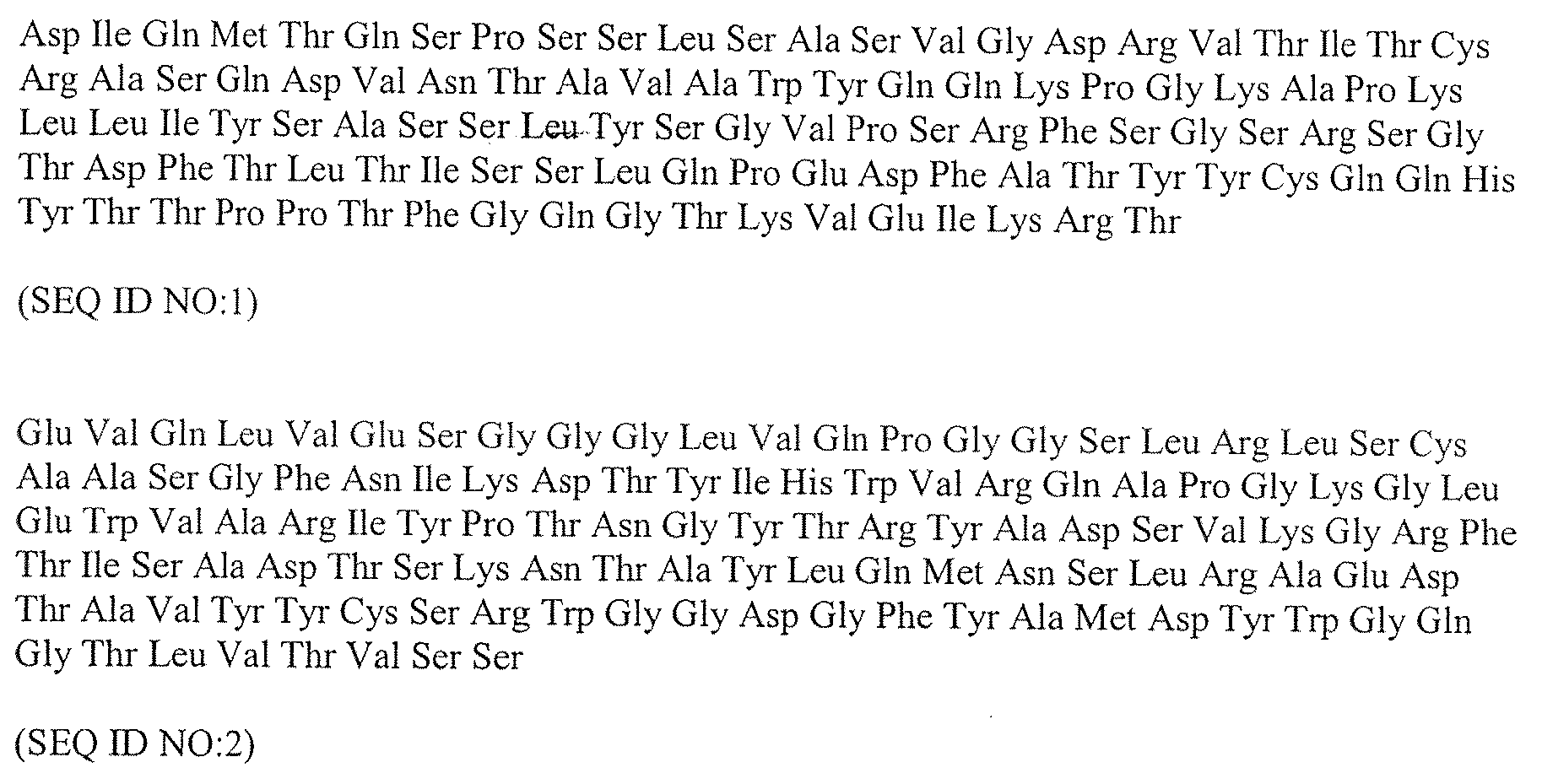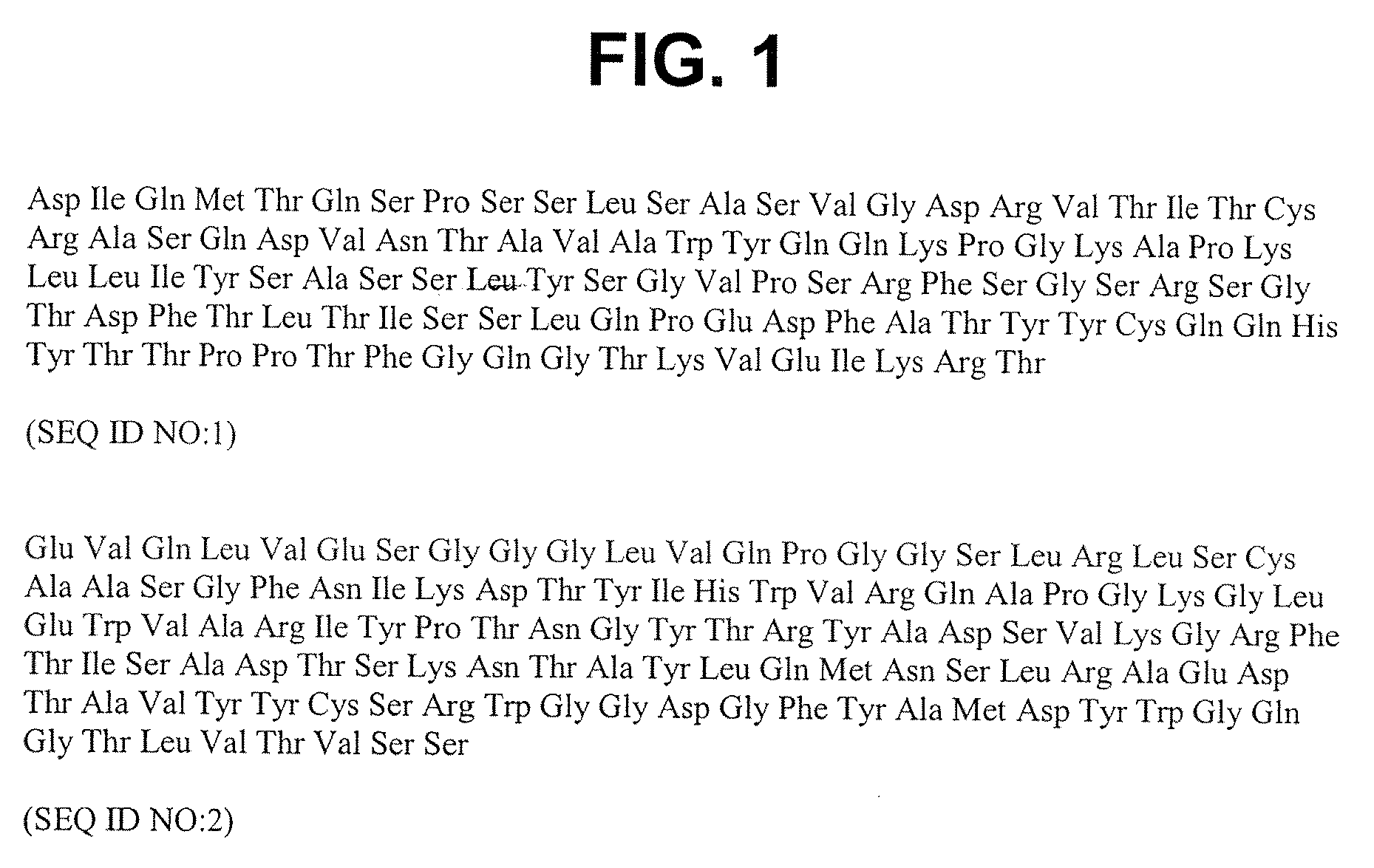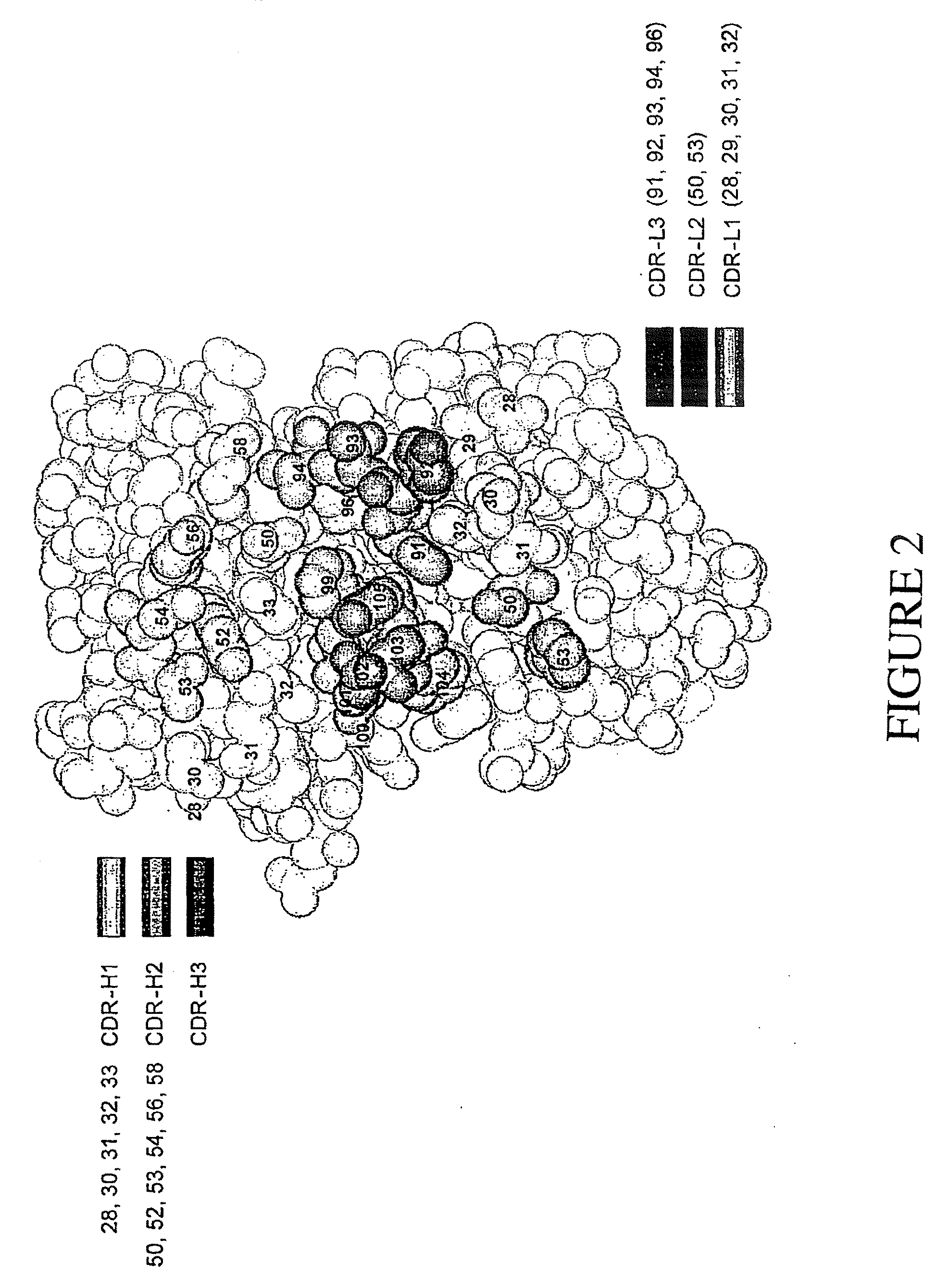Binding Polypeptides and Uses Thereof
a technology of polypeptides and polypeptides, applied in the field of variable cdrs, can solve the problems of inability to apply systematic and quantitative methods, limited diversity of these libraries, and inability to meet the needs of users,
- Summary
- Abstract
- Description
- Claims
- Application Information
AI Technical Summary
Benefits of technology
Problems solved by technology
Method used
Image
Examples
example 1
Construction of Phage-Displayed Fab Libraries with CDR Residues Enriched in Tyr, Ser, Gly, and Arg
[0679] Phage-displayed Fab libraries were constructed using a phagemid vector, Fab-C, that resulted in the display of bivalent Fab moieties dimerized by a free cysteine inserted between the Fab heavy chain and the C-terminal domain of the gene-3 minor coat protein (P3C). This vector was constructed as described in U.S. Patent Application Publication No. US20050119455 and in Lee et al., J. Immunol. Meth. 284: 119-132 (2004). The vector (schematically illustrated in FIG. 5) comprises humanized antibody 4D5 variable domains under the control of the IPTG-inducible Ptac promoter. Humanized antibody 4D5 has mostly human consensus sequence framework regions in the heavy and light chains, and CDR regions from a mouse monoclonal antibody specific for HER-2. Methods of making the anti-HER-2 antibody and the identity of the variable domain sequences are provided in U.S. Pat. Nos. 5,821,337 and 6,...
example 2
Selection of Specific Antibodies from Naïve Library YSGR-A-D
[0684] Phage from library YSGR-A-D (described in Example 1, above) were cycled through rounds of binding selection to enrich for clones binding to human DR5 or HER-2. The binding selections were conducted using previously described methods (Sidhu et al., supra).
[0685] A human DR5 sequence is shown in Table 1. An extracellular domain of DR5 as shown in Table 1 was utilized in the binding selection. Likewise, an extracellular domain of a human HER-2 sequence is prepared as described in Franklin M C. Carey K D. Vajdos F F. Leahy D J. de Vos A M. Sliwkowski M X. Insights into ErbB signaling from the structure of the ErbB2-pertuzumab complex. Cancer Cell. 5(4):317-28, 2004. A sequence for human HER-2 ECD (amino acids 23-646) is provided at the Protein DataBank Record 1S78 (2004).
[0686] NUNC 96-well Maxisorp immunoplates were coated overnight at 4° C. with 5 μg / mL target protein (human DR5 or human HER-2) and blocked for 2 hou...
example 3
Analysis of Binders to DR5
[0697] The binding site for the Apo 2L ligand to human DR5 has been previously mapped and the crystal structure for the binding site determined (See Hymowitz et al., Molecular Cell 4:564 (1999); WO01 / 19861). The crystal structure and models can be used to map the binding of anti-DR5 antibodies.
[0698] Previous studies have identified antibodies that bind to human DR5. These antibodies are designated BDF1 and YSD1. The antibody BDF1 was isolated from a library in which CDRs were randomized with all 20 amino acids and has CDR sequences: 1) CDRH1 sequence of IGKSGIH (SEQ ID NO:600); 2) CDR2 a sequence of VAVIYPHDGNTAYA (SEQ ID NO:601); and 3) CDRH3 sequence of RLALVRMWMD (SEQ ID NO:602). The YSD1 antibody was isolated from a library in which CDR positions were varied with tyrosine and serine and has a CDRH3 sequence of YSSYYSYYYSSSSYSY (SEQ ID NO:603). The binding site of these antibodies on human DR5 is located at the N terminus of the molecule and has littl...
PUM
| Property | Measurement | Unit |
|---|---|---|
| Fraction | aaaaa | aaaaa |
| Fraction | aaaaa | aaaaa |
| Fraction | aaaaa | aaaaa |
Abstract
Description
Claims
Application Information
 Login to View More
Login to View More - R&D
- Intellectual Property
- Life Sciences
- Materials
- Tech Scout
- Unparalleled Data Quality
- Higher Quality Content
- 60% Fewer Hallucinations
Browse by: Latest US Patents, China's latest patents, Technical Efficacy Thesaurus, Application Domain, Technology Topic, Popular Technical Reports.
© 2025 PatSnap. All rights reserved.Legal|Privacy policy|Modern Slavery Act Transparency Statement|Sitemap|About US| Contact US: help@patsnap.com



